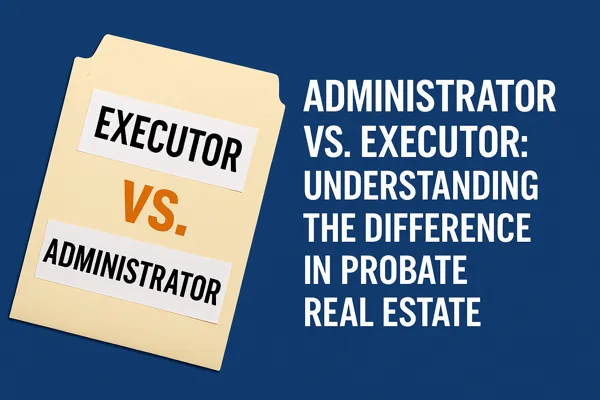
Administrator vs. Executor: Key Differences in California Probate Real Estate
Administrator vs. Executor: Understanding the Difference in Probate Real Estate
When someone passes away and their home needs to be sold, one of the first questions that comes up is: who has the authority to handle the estate? In probate real estate, that role falls to either an Executor or an Administrator—and while their duties are similar, how they’re appointed makes all the difference.
The Executor: Named in a Will
An Executor is the person chosen by the deceased in their will to manage the estate. Once the court confirms their appointment, the Executor has the legal authority to act on behalf of the estate—paying debts, distributing assets, and, when needed, selling property. Because they were named in advance, the process tends to move more smoothly.
The Administrator: Appointed by the Court
If someone dies without a will (known as dying intestate), the court appoints an Administrator to fill the same role. Often this is a family member, but it could also be a professional fiduciary. The Administrator’s duties mirror those of an Executor, but they can’t act until the court issues Letters of Administration, granting them legal authority.
Why It Matters in Real Estate
Whether it’s an Executor or Administrator, the person handling the estate must have court-issued authority before they can sign a listing agreement, open escrow, or transfer title.
Executors usually operate under full authority if granted by the court, which allows them to sell real estate without additional court approval.
Administrators often start with limited authority, requiring court confirmation before completing a sale—unless full authority is granted under the Independent Administration of Estates Act (IAEA).
The Bottom Line
Both Executors and Administrators carry significant responsibility. In either case, working with a real estate professional who specializes in probate and trust sales can make the process far less stressful. Understanding who holds authority and how that affects the sale timeline is key to closing a smooth and compliant transaction.






